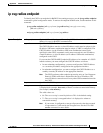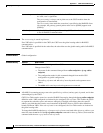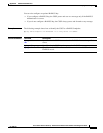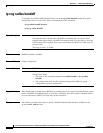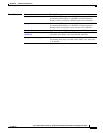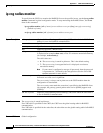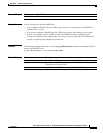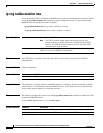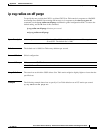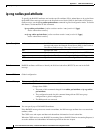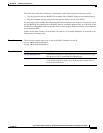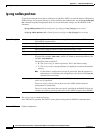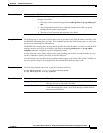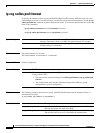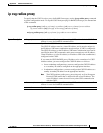
A-124
Cisco Content Services Gateway - 2nd Generation Release 2.0 Installation and Configuration Guide
OL-15491-01
Appendix A CSG2 Command Reference
ip csg radius monitor nas
ip csg radius monitor nas
To specify that the CSG2 is to monitor the RADIUS flows to the specified Network Access Server (NAS),
use the ip csg radius monitor nas command in global configuration mode. To stop monitoring the
RADIUS flows, use the no form of this command.
ip csg radius monitor nas nas-ip-address [vrf nas-vrf-name]
no ip csg radius monitor nas nas-ip-address [vrf nas-vrf-name]
Syntax Description
Defaults If no VRF table is specified for the NAS, the CSG2 uses the global routing table for RADIUS
communication.
Command Modes Global configuration
Command History
Usage Guidelines This command is required whenever a RADIUS monitor is configured. Use this command to identify
each NAS that is to communicate with the RADIUS monitor server. Each interface on which a NAS
server resides must be marked as a subscriber interface.
Examples The following example shows how to use the ip csg radius monitor nas command to enable the CSG2
to monitor the RADIUS flows:
ip csg radius monitor nas 1.2.3.4 vrf NAS_TABLE
Related Commands
nas-ip-address Specifies the NAS IP address to monitor.
Note The CSG2 performs radius monitor processing only on User
Datagram Protocol (UDP) traffic that is destined for the NAS IP
address. The NAS IP address cannot be used for any other UDP
communication with the CSG2.
vrf nas-vrf-name (Optional) Virtual Routing and Forwarding (VRF) table which the NAS IP
address is to use for RADIUS communication.
Release Modification
12.4(15)MD This command was introduced.
Command Description
ip csg radius endpoint Identifies the CSG2 as an endpoint for RADIUS Accounting messages.
ip csg radius proxy Specifies that the CSG2 is to be a proxy for RADIUS messages.




